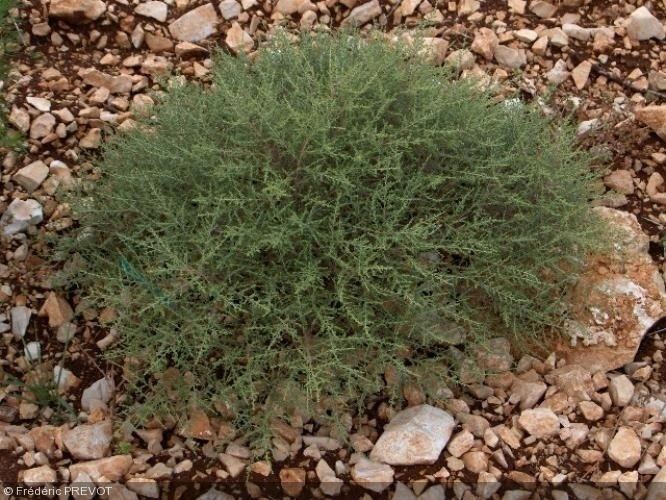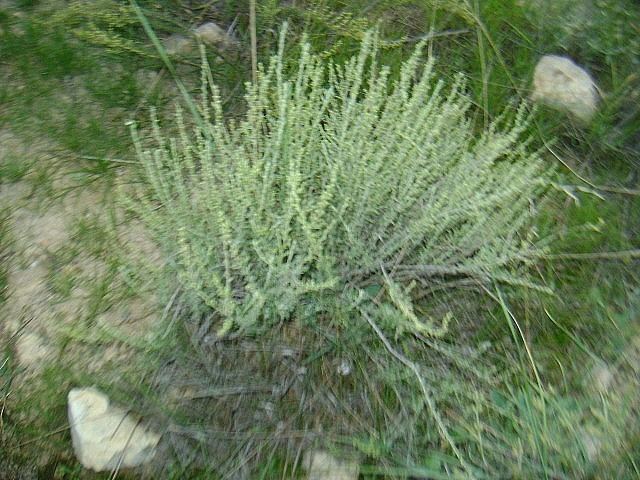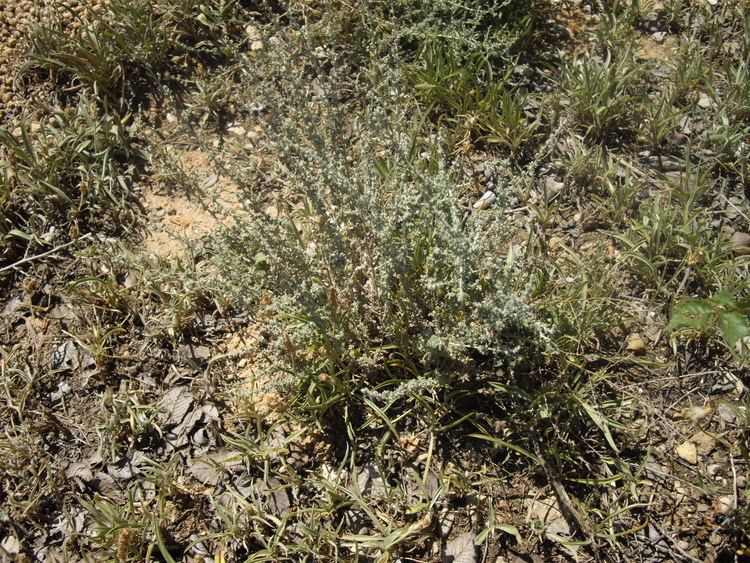Tribe Anthemideae Scientific name Artemisia herba-alba Rank Species | Genus Artemisia Higher classification Mugworts | |
 | ||
Similar Mugworts, Daisy family, Artemisia campestris, Artemisia arborescens, Shrubby Russian Thistle | ||
Artemisia herba-alba (white wormwood) is a perennial shrub in the genus Artemisia that grows commonly on the dry steppes of the Mediterranean regions in Northern Africa (Saharan Maghreb), Western Asia (Arabian Peninsula) and Southwestern Europe. It is used as an antiseptic and antispasmodic in herbal medicine.
Contents

Names

Its specific epithet herba-alba means "white herb" in Latin, as its stems and leaves are white and woolly. Similarly, it is armoise herbe-blanche or armoise blanche in French.
In Arabic, it is shīeḥ (الشيح). And it is la'anah (לענה) in Old Testament Hebrew. " Wormwood " ( in the Bible, Rev. 8:10-11 ).
Botanical description

Artemisia herba-alba is a chamaeophyte that grows to 20–40 cm (8–16 in). Leaves are strongly aromatic and covered with fine glandular hairs that reflect sunlight giving a grayish aspect to the shrub. The leaves of sterile shoots are grey, petiolate, ovate to orbicular in outline; whereas, the leaves of flowering stems, more abundant in winter, are much smaller.
The flowering heads are sessile, oblong and tapering at base. The plant flowers from September to December. The receptacle is naked with 2–5 yellowish hermaphrodite flowers per head.
Phytochemistry
Essential oil of A. herba-alba, from the Sinai Desert, contains mainly 1,8-cineole and appreciable amounts of alpha and beta-thujone as well as other oxygenated monoterpenes including terpinen-4-ol, camphor and borneol. Davanone, chrysanthenone and cis-chrysanthenol have been described as major constituents in some populations of A. herba-alba from Morocco and Spain. Less common non-head-to-tail monoterpene alcohols have been identified in some populations from Negev desert, such as santolina alcohol and yomogi alcohol.
Eudesmanolide and germacranolide sesquiterpenes have been detected in the methanol extract of aerial parts, collected in Egypt.
Two bioactive flavonoids, assumed to be hispidulin and cirsiliol, were isolated by chromatography from aerial parts ethyl acetate-extract.
Uses
Artemisia herba-alba is good fodder for grazing animals, mainly sheep, and in the Algerian steppes cattle.
Herbal medicine
This species of sagebrush is widely used in herbal medicine for its antiseptic, vermifuge and antispasmodic properties. Artemisia herba-alba was reported as a traditional remedy of enteritis, and various intestinal disturbances, among the Bedouins in the Negev desert. In fact, essential oil showed antibacterial activity, as well as, antispasmodic activity on rabbits.
Artemisia herba-alba based teas were used in Iraqi folk medicine for the treatment of diabetes mellitus. An aqueous extract of aerial parts of the plant has shown a hypoglycemic effect in alloxan-induced diabetic rabbits and mice.
Culture
Artemisia herba-alba is thought to be the plant translated as "wormwood" in English-language versions of the Bible (apsinthos in the Greek text). Wormwood is mentioned seven times in the Jewish Bible, always with the implication of bitterness. Wormwood is mentioned once in the New Testament, as the name of a star, also with implications of bitterness.
